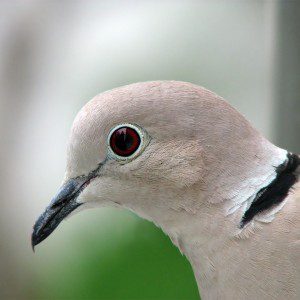 We all know that the Rock (city) Pigeon, House Sparrow, and European Starling were imported from Europe in the late 1800’s and have become minor pests (or major, depending on your point of view.) The Ring-necked Pheasant was brought over from China about the same time and has turned out to be a nice addition to our avifauna. Other introductions include the Scarlet Ibis, Chukar Partridge, and Spot-breasted Oriole. Hawaii is full of exotic species and Florida and California host a bunch as well. Monk Parakeets, native to South America, are found in many places on the east coast, including Brooklyn; and you are probably aware of the Red-masked Parakeets of Telegraph Hill in San Francisco. Most of the introductions did not make it or survived only in small populations. Some “introductions” were apparently natural, such as the Cattle Egret which somehow got to South America from Africa and have been spreading northward for the past century, including our area. For a complete list of bird introductions around the world, see http://en.wikipedia.org/wiki/List_of_introduced_bird_species.
We all know that the Rock (city) Pigeon, House Sparrow, and European Starling were imported from Europe in the late 1800’s and have become minor pests (or major, depending on your point of view.) The Ring-necked Pheasant was brought over from China about the same time and has turned out to be a nice addition to our avifauna. Other introductions include the Scarlet Ibis, Chukar Partridge, and Spot-breasted Oriole. Hawaii is full of exotic species and Florida and California host a bunch as well. Monk Parakeets, native to South America, are found in many places on the east coast, including Brooklyn; and you are probably aware of the Red-masked Parakeets of Telegraph Hill in San Francisco. Most of the introductions did not make it or survived only in small populations. Some “introductions” were apparently natural, such as the Cattle Egret which somehow got to South America from Africa and have been spreading northward for the past century, including our area. For a complete list of bird introductions around the world, see http://en.wikipedia.org/wiki/List_of_introduced_bird_species.
Some bird species have become pests when introduced to new areas. The Japanese White Eye was introduced into Hawaii to control insects and became the most common bird in Hawaii, spreading avian diseases to native birds and carrying invasive seeds all over the islands. The Ring-necked Parakeet is a crop pest in Great Britain, having been brought over from India.
The Eurasian Collared Dove, native to India, Sri Lanka, and Myanmar, was introduced into Europe three hundred years ago and into the Bahamas in the 1970’s. By 1982 it had made its way to Florida and is now found south to Mexico, north to Nova Scotia and west to California. Its impact on other species is as yet unknown; it appears to occupy an ecological niche between that of the native Mourning Dove and the introduced Rock Pigeon – sort of urban to wooded habitat. (The similar Band-tailed Pigeon is strictly a forest species.) Some have suggested that the Eurasian Collared Dove is filling the niche of the extinct Passenger Pigeon.
Typically a new species will either die off or remain viable in only limited populations. But sometimes the import will be so adaptable and flexible that it can live almost anywhere and spreads rapidly across the countryside. This appears to be what is happening with the Eurasian Collared Dove. I was one of the first people to spot the birds in Chico when I saw a flock in my backyard two years ago. Now I, and everyone else, see them regularly.
By the way, there is no biological difference between pigeons and doves. Those named pigeons tend to be larger than those called doves, but there are many exceptions. The word “dove” derived from the Anglo-Saxon and “pigeon” from the French. The Passenger Pigeon is so named because French explorers in North America saw enormous flocks of these birds passing over and called them Pigeon de passage (pigeons of passage).
I’ll blog about carrier pigeons and racing pigeons and other breeds of pigeons later.
Dr. Roger Lederer. thank you for sharing your up-close-and-personal experiences with the wonderful world of birds.
Your love, as well as your knowledge of these magnificent creatures is what makes your writings so special.
All your articles are favorites, I cannot single out one as best……….
Thank you,
Mary